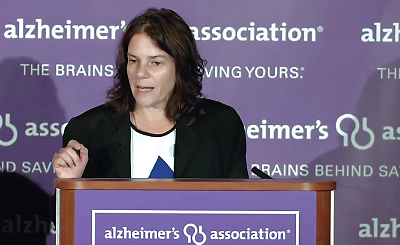Low Physical Activity in Early Adulthood Linked to Worse Midlife Cognition
Abstract
According to the Centers for Disease Control and Prevention, less than half of U.S. adults meet the recommended guidelines for the weekly physical activity.
A study presented at the 2015 Alzheimer’s Association International Conference, held in July in Washington, D.C., suggests low levels of physical activity and high television viewing in early adulthood may impact cognitive function in midlife.

Kristine Yaffe, M.D., says that reducing today’s high levels of physical activity and sedentary behavior in early adulthood may have a significant public health impact.
“We [in the United States] are in the middle of a ‘couch potato-like’ situation in which a lot of people are not getting the kind of exercise that they should be getting,” said the study’s senior author, Kristine Yaffe, M.D., the Roy and Marie Scola Endowed Chair and Vice Chair of Research in Psychiatry at the University of California, San Francisco, at a press conference during the meeting.
In fact, the Centers for Disease Control and Prevention (CDC) reports that less than half of U.S. adults aged 18 to 64 meet the recommended guidelines for weekly physical activity. That includes at least 150 minutes of moderate-intensity aerobic activity (that is, brisk walking) and two or more days of muscle-strengthening activities on all major muscle groups.
“We know from prior work that physical activity in middle adulthood may serve as a protective factor against cognitive decline or dementia in late life,” said Yaffe. “But how do behaviors during a person’s 20s and 30s affect … cognitive functioning in midlife?”
To answer this question, Yaffe and colleagues analyzed data of physical activity as well as specific sedentary behaviors, such as television viewing, of more than 3,200 individuals aged 18 to 30. The participants’ physical activity and television viewing were assessed at three or more visits over 25 years.
“This was a life course approach. We know that behaviors come and go, so we wanted to gather information of what the participants were doing over time,” Yaffe explained.
At year 25 of the study, the researchers assessed the participants’ memory, executive function, and processing speed and found that participants who reported low physical activity (less than 300 kcal per 50-minute session, three times a week) in more than two-thirds of the follow-up visits had significantly worse cognition in midlife than individuals reporting less frequent physical inactivity—even after adjusting for education, smoking habits, alcohol consumption, body mass index, and hypertension.
Participants who reported regularly watching television for more than 4 hours per day throughout the study also had worse midlife cognition than those who reported less television viewing. Those who reported a history of long-term low physical activity and high television viewing were almost two times more likely to have poor cognitive function in midlife.
“These results are really important because it sets the stage for what’s going to happen over the next 20 to 30 years for these participants,” said Yaffe.
Yaffe and colleagues emphasized that because global data suggest that levels of physical inactivity and sedentary behavior are increasing, understanding the relationship between physical activity in early adulthood and cognitive decline later in life may be of importance.
“We really need to ensure that young adults and children understand that physical activity is not only important for their weight and heart, but also for their brain,” Yaffe said.
The researchers concluded that because research indicates that Alzheimer’s disease and other dementias develop over several decades, increasing physical activity and reducing sedentary behavior beginning in early adulthood may have a significant public health impact.
The current investigation was a part of the Coronary Artery Risk Development in Young Adults study, funded by the National Heart, Lung, and Blood Institute. ■



